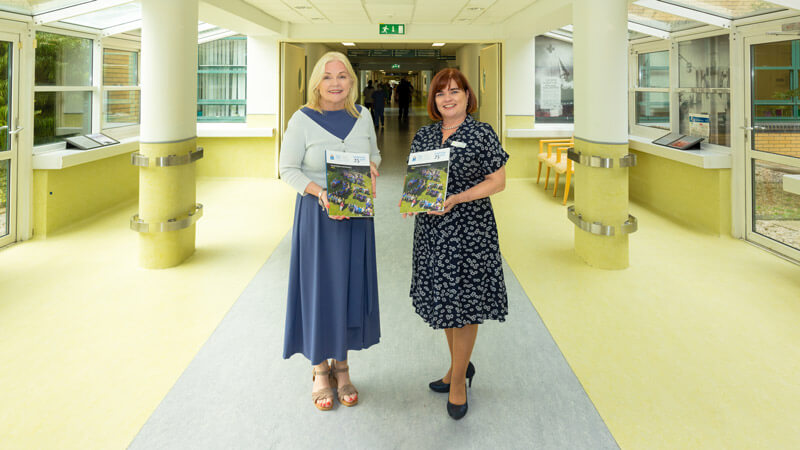
Tallaght University Hospital has reported a 12% reduction in its waiting list during 2023 and said that 84% of all patients were waiting three months or less for surgery. This, it said was a significant achievement considering the increased activity levels and demands on hospital services during 2023.
The figures come from the Hospital’s annual report for 2023, the year which marked the 25th anniversary of its opening.
Over 10,000 surgeries were performed in TUH last year, with over 262,000 outpatient appointments and for the first time attendances to the Emergency Department was over 55,000.
“One of the best indicators of the growth in the Hospital’s workload can be seen by looking at the number of patients who attended the Emergency Department at TUH during 2023. For the first time last year over 55,000 attended the ED. On average it took 32 minutes for patients to be triaged on arrival and most were seen by a doctor within four hours and 29 minutes,” said a hospital spokesperson “
Looking ahead TUH CEO, Lucy Nugent said, “Our focus remains on the implementation of our strategy and expanding our services as much as we can, given our footprint. Thanks to the work undertaken by the Facilities Team, we increased our onsite capacity for endoscopies. The additional rooms will see an acceleration in the reduction on this waiting list in 2024. Incredible efforts were made by teams across the system to reduce waiting times for outpatient appointments, this has resulted in a 12% reduction in our waiting lists. There is still more work to be done in this area but we are hopeful as more space becomes available in the Hospital as paediatric services move out we will be able to expand the number of clinics we can offer, further reducing waiting times for patients.”
The annual report says while COVID-19 itself had less of an influence on admissions, the pandemic did cause an abnormal level of growth in all clinical departments. One possible explanation for this could be that patients delayed seeking treatment during the lockdowns.
For the vast majority of the year the Hospital was at 100% occupancy. It is accepted that operating above 85% has a significant and material impact on patient flow and this reinforces the urgent need for additional beds.
There was also a significant increase in the number of patients over 75 presenting at the Hospital’s ED, which put added pressure on the system as these patients have more complex needs and often require admission to the Hospital.
Launching the annual report, The Chair of the TUH Board, Trinity Professor Anne-Marie Brady said, “Activity levels continued to increase at the Hospital with a sharp increase in urgent and emergency care. I appreciate the challenges this presents for patients and staff as they try to find space for these patients to receive their treatment and at the same time reduce the growth in waiting lists for scheduled care. It is to everyone’s credit that despite the pressure from unplanned activity the inpatient waiting lists only grew by 56 in the year. Until the Hospital gets additional bed capacity the ability to materially improve the inpatients waiting lists will be limited.”
The ED saw a 37% rise increase in patients waiting to be admitted to a ward at 8am, although on a positive note, there was a notable improvement in trolley figures in the second quarter of the year.

